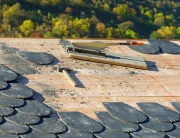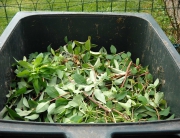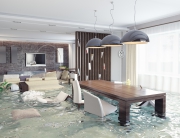Wood Shop Safety: Prevent Fires. Let’s talk about preventing spontaneous combustion fires in your home wood shop or garage. These fires are a more common problem than you might think. So we thought we would explain exactly what spontaneous combustion is, and how you can prevent it from happening in your own home or garage wood shop.
First of all, it is critically important to properly store and dispose of rags that have oil, paint thinner, solvents, and any other oily substances on them. Why? Well, let’s discuss what spontaneous combustion is, and how it works. The name “spontaneous” is a bit misleading. While spontaneous combustion may indeed to appear to occur spontaneously, there need to be 3 elements present that come together for it to happen. They are:
1. Materials with a low ignition point, such as cotton rags, sawdust, wood chips, etc., which begin to develop heat. In a wood shop, mechanic’s garage, or other workshop setting, (in a home or otherwise), the heat increase commonly occurs by exposing the material to the types of substances listed above. Under normal circumstances, such as when you are using a cotton rag to apply a stain to wood, the heat will dissipate and it won’t cause a problem. What does cause a problem is when the second and third elements are present:
2. The heat in the material starts building up, and has no way to escape. This typically happens when the oily materials are clustered together, such as when you have a pile of oily or solvent soaked-rags sitting in a corner, or stored in an open container. The temperature in the material can easily rise to above the ignition point of the material.
3. There is sufficient oxygen and fuel present for the fire to ignite.
The ignition process can happen rather quickly, and is the cause of many accidental fires in people’s workshops and homes every year. So what can you do to increase your wood shop safety? Here is what we recommend you always do:
1. Store oily or solvent-coated rags in an airtight metal container with a lid, preferably half-filled with water. Dispose of them according to the guidelines in your community (such as an area of your local dump that accepts hazardous materials) OR
2. If you plan to re-use the rags, soak them in water, and then air-dry them in a single layer or from a clothes-line, preferably outside your home, or in a well-ventilated room that is nowhere near a heat source.
3. Make it a regular practice to always sweep up sawdust and wood chips after every project.
4. Keep a fire extinguisher in your wood shop.
Taking these measures will help to prevent spontaneous combustion fires, and will drastically increase your wood shop safety and your peace of mind!
For More Information About Spontaneous Combustion: Wikipedia’s helpful article: Spontaneous Combustion.
By See Jane Drill, Copyright 2014, All Rights Reserved







Leave A Comment